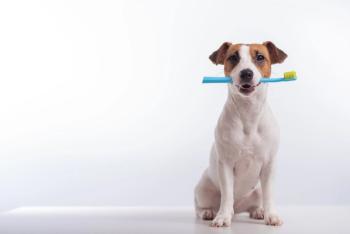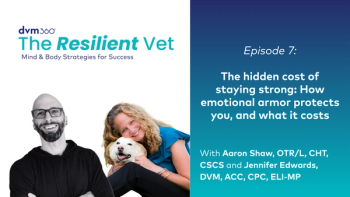
Tracking livestock on the horizon, experts say
Manhattan, Kan.-American livestock producers soon may need to identify and track each and every animal they send to market, say animal health experts at Kansas State University (KSU).
Manhattan, Kan.-American livestock producers soon may need to identify and track each and every animal they send to market, say animal health experts at Kansas State University (KSU).
Because of foot and mouth disease and bovine spongiform encephalopathy (BSE) in Europe, all nations now are taking extra precautions to ensure the safety of food that's imported as well as certifying what they are exporting elsewhere.
Dr. Mark Spire
A veterinary telemedicine research and development project entering its second stage at Kansas State University (KSU)is attempting to create the infrastructure to monitor the health of cattle remotely, and if the researchers are successful, the system would give livestock producers and veterinarians the heads-up on emerging diseases.
The National Science Foundation (NSF)awarded $899,996 to KSU researchers for five years of study. "Information Technology Research: An Infrastructure for Veterinary Telemedicine - Proactive Herd Health Management for Disease Prevention from Farm to Market" began in October.
The research team includes principal investigator Dan Andresen, a computing and information scientist; Steve Warren, an electrical and computer engineer; and veterinary researchers Howard Erickson, David Poole and Mark Spire. The grant also will provide support for several graduate students.
"The traceability of meat is the real issue here," Andresen says. "Someday, we'll have to know exactly what herd, and what animal, any slice of meat has come from." Minus such an identification system, beef export markets could close to U.S. producers.
The KSU researchers already received a $100,000 grant from the NSF in 2002 for a critical first step in this telemedicine project, to demonstrate "proof of concept." Could sensors placed on a cow, in fact, identify the animal, give its location and accumulate and store reliable health data like its heart rate, respiration rate and temperature? Could the health data be uploaded from the animal to Bluetooth-compliant receiving stations at a feedbunk or water trough for analysis anytime?
Andresen described first-year research and development: "The critical thing we did this year is prove that, yes, we can get health data off the cow and into some type of data-recording device, and the data appears to look, at least on first analysis, like it could be useful data."
Over the next five years, KSU researchers will address technical issues toward realizing a telemedicine system that's capable of alerting livestock producers and veterinarians to serious animal health problems and potential trouble spots.
The complex infrastructure will have to be capable of accumulating and aggregating three layers of data, be economically feasible for producers, and protect the confidentiality of their herd health information while still allowing data access for epidemiological analysis, Andresen says.
The telemedicine system will gather health data for an animal, store it locally so it can be pulled onto a handheld PDA-type device, which gives a producer a coarse health analysis. Next, this data can be uploaded onto a personal computer at the ranch or feedlot for more sophisticated analysis that could include herd records, weather data or global information systems data, in order to detect worrisome health patterns in the herd. Finally, via an Internet connection, a synopsis of ranch herd data would go to local veterinarians, creating a kind of regional animal health picture.
Successfully developing a veterinary telemedicine system capable of monitoring health information for the vast U.S. livestock herd provides a national security benefit, too. With it in place, veterinarians would have early warning of serious diseases - a lesson drawn from experiences of Great Britain and elsewhere.
In September, KSU researchers described their concept for the Internet-based livestock health information infrastructure in two papers.
"A Distributed Infrastructure for Veterinary Telemedicine" and "Wearable Sensor System for Wireless State-of-Health Determination in Cattle" were presented at the 25th Annual International Conference of the IEEE Engineering in Medicine and Biology Society in Cancun.
Authors are Drs. Luke Nagl, Ryan Schmitz, Steve Warren, Tammi Hildreth, Howard Erickson, Dan Andresen, Jianchu Yao and David Poole.
Newsletter
From exam room tips to practice management insights, get trusted veterinary news delivered straight to your inbox—subscribe to dvm360.




